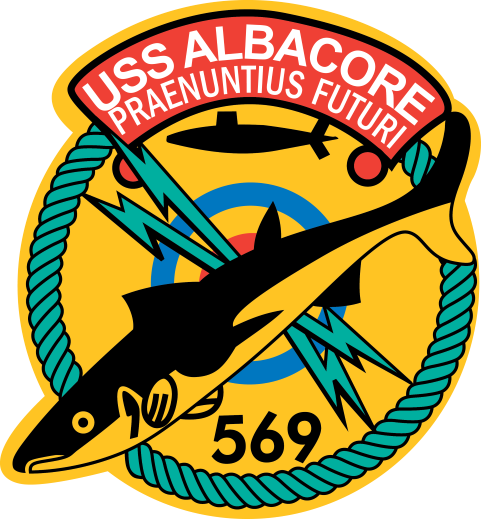Welcome Teachers
The following programming has been designed to fulfill aspects of the Maine, Massachusetts, and New Hampshire Curriculum Frameworks, while still remaining true to the mission of the USS Albacore. Each program description below highlights the activities students will participate in, as well as overarching learning themes. In order to ensure that our programs are meeting educator expectations, we encourage you to complete our post-visit survey, which can be found at https://www.ussalbacore.org/teachers. For more information on specific curriculum frameworks, please visit https://www.ussalbacore.org/curriculum-frameworks or call us at (603)436-3680.
Communication Lesson Plans
Morse Code Grades 1-2 (easiest)
Students will learn about different ways to communicate and will consider benefits and drawbacks to different methods of communication, as well as how communication has changed over time. They will have the chance to practice communicating via Morse code, thus allowing them to experiment with a new method of communication.
Morse Code Grades 3-5 (mid-level challenge)
Students will learn about Morse Code communication on submarines. Students will better understand technological advances and how engineering has historical influence.
Morse Code Grades 5-8 (most challenging)
Students will learn about Morse Code communication on submarines. Students will better understand technological advances and how engineering has historical influence.
Semaphore Flags (with making flags)
Students will make their own semaphore flags and use them to communicate.
Semaphore Flags (without making flags)
Students will learn about semaphore flags as a means of communication.
Naval Phraseology
Students will learn about naval phraseology. In doing so, they will consider the importance of effective communication, the impact of a time period and historical context on communication, and the relationship between a group of people and methods of communication.
Notes on telephones
Students will learn about how to take notes on telephones, what is the history of telephones in submarines.
STEM Lesson Plans
Buoyancy
Through this activity, students will learn about buoyancy, including concepts such as Archimedes Principle, displacement, weight, and buoyant forces.
Aerodynamics
In this packet, we will be learning the basic physics behind how air balloons, airships, and airplanes fly! We are then going to practice these principles in easy and fun activities that can be done in the classroom or at home.
Flag Day
In this packet, we will learn the history and importance of the U.S. Flag. Subjects include: Origins of the flag, along with its history with the U.S. Navy; Betsy Ross; interactive skills to draw U.S. flags throughout history; flag etiquette; and a test on famous U.S. flags in history.
How Waves Work
This packet is focuses on experimenting with the physics of waves. Subjects: Description of waves and wave theory; physical waves; sound waves; and ocean waves and the coast.
Hulls
In this packet, we will be learning about how ship hulls are made and what they can be used for, as well as the basics physics of buoyancy: what makes ships float. In this booklet, one can also build hulls with an easy and fun activity that can be done in the classroom or at home. Also discussed are ways to protect a hull, along with a history of the David Taylor Model basin.
This packet focuses on the physics behind simple machines utilized by the U.S. Navy. Subjects: Defining a simple machine; levers; wheels and axels; pulleys; inclined planes and wedges; and screws. There are also plenty of activities and a scavenger hunt for use in the museum with this booklet.
Submarines
This packet focuses on submarines, their history, how they work, and how the the U.S. Navy utilizes them today. There are activities about their buoyancy and energy as well for all ages to enjoy.
Corpsman Up!
This packet focuses on the Hospital Corpsman rating. Subjects include: history of the rating; service in World War II; the various uniforms throughout the years; rank and insignia; equipment and medical bags; campaigns and Corpsmen who received the Medal of Honor; and what the Corpsmen are doing in today's U.S. Navy.
Navy ABCs(all ages)
This packet focuses on how Sailor or Soldier communicate with each others and transfer their messages in code word.
DIVE! DIVE! The History and Technology of Submarines
An Introduction to the History and Technology of Submarines is a resource guide for science and social studies classes that explores the world of U.S. Navy submarines and other submersibles.


















